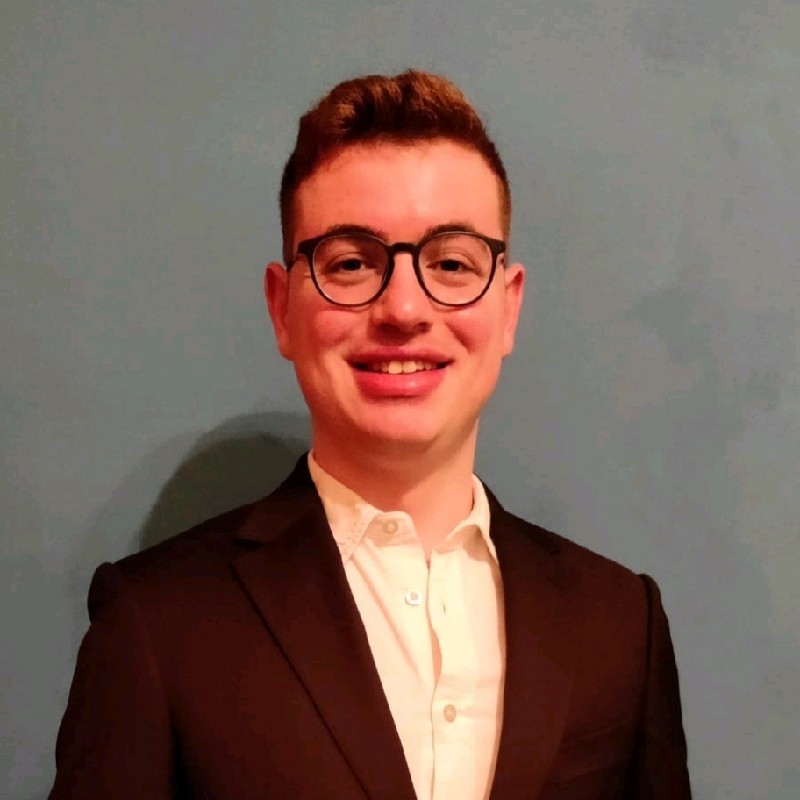
Dr Duncan Mifsud
About
Duncan hails from the Mediterranean island of Malta. In 2018, he received a B.Sc. (Hons.) in Chemistry from the University of Malta, and subsequently moved to Scotland to pursue an M.Sc. in Geochemistry at the University of St Andrews, which he obtained in 2019. He is currently reading for a Ph.D. in Astrophysical Chemistry and Molecular Astrophysics at the University of Kent under the supervision of Prof. Nigel J. Mason OBE.
Research interests
Broadly speaking, Duncan is interested in all things related to planetary and space chemistry. Presently, he is investigating the chemical reactions which occur in astrophysical (interstellar or planetary) ices as a result of their processing by ionising radiation. Such reactions are ubiquitous in space settings, and may lead to the formation of molecules which are of biological or geological significance. This research is being conducted at the ATOMKI Institute for Nuclear Research in Debrecen, eastern Hungary, where Duncan is currently based.
Duncan is also an amateur vexillologist, and is a full member of the UK Flag Institute.
Research Projects
Comparative Irradiations of Crystalline and Amorphous Ices
The influence of certain parameters such as temperature and ice thickness on the radiation chemistry of astrophysical ice analogues is a subject which has been well probed in the past. The influence of the solid phase on the chemical productivity of these ices, however, is less understood. I run systematic and comparative irradiations using high-energy electrons beams to investigate the differences in the radiation chemistry of amorphous and crystalline ices. Such work may be applied to understand the chemistry of astrophysical regions characterised by temperature-induced crystallisation of ices as well as their radiation-induced amorphisation.
Photochemistry and Radiation Chemistry of Mineral Species Relevant to Astrophysics
Understanding the spectra and chemistry of mineral and refractory species is especially relevant to our understanding of planetary and lunar surface evolution. To this end, I make use of various spectroscopic techniques to study pristine and irradiated mineral species which are likely to be found on other celestial bodies within the Solar System; particularly Europa. I am also involved in cross-collaboration projects with other researchers (both at Kent and further afield) in the areas of isotope cosmochemistry and mineral-assisted photochemical synthesis of organic molecules relevant to the abiogenesis.
Interstellar Sulphur Ice Astrochemistry
Although the cosmic abundance of sulphur is neatly accounted for by gas-phase molecules in the diffuse interstellar medium, the dense interstellar medium is depleted in sulphur by two or three orders of magnitude. Although several suggestions have been made as to the nature of this ‘missing sulphur’, no conclusive answers have yet been reached. I record high-resolution spectra of pristine and irradiated sulphur-containing molecular ices in order to help understand the possible chemical pathways followed by sulphur in the dense interstellar medium.
Conference/Workshop Talks
- “Transnational Access Project Proposals.” Presented to the Outreach Division of the Europlanet Society (Dec 2020)
- “Sulphur Astrochemistry: Current Problems and Future Solutions.” Presented to the Physical Research Laboratory of Ahmedabad, India (May 2021)
- “Sulphur Astrochemistry in the Laboratory: Techniques to Understand the Formation of Interstellar Sulphur-Bearing Molecules.” Presented to the Dynamics of Systems on the Nanoscale (DySoN) Conference (Oct 2021)
- “The Prebiotic Potential and Molecular Diversity of Space Environments: Past Projects and Future Possibilities with SOFIA.” Presented to the NASA-DLR SOFIA Community Forum (Jan 2022)
- “The Influence of NOx Emissions on the Nitrogen Isotopic Composition of Tree-Ring and Foliage.” Presented to the UK Centre for Ecology and Hydrology (May 2022)
- “Laboratory Studies of Astrochemical Ices Using Mid-Infrared Spectroscopy.” Presented to the MultIChem 2022 Conference (May 2022)
- “Exploring Radiation Ice Astrochemistry in the Laboratory: Ozone Formation from Irradiated Carbon Dioxide Ices.” Presented to the 6th NoRCEL Conference (Aug 2022)
- “From Simple Sulphur Molecules to Complex Organic Molecules: An Overview of My Research Interests in Space Chemistry.” Presented to Leiden University (Oct 2022)
- “The Seeds of Life in Space: Astrochemical Processes in Interstellar Ices.” Presented to the Collisions Physics and Chemistry and their Applications (COPCA) Conference (Oct 2022)
- “Towards a Better Understanding of Sulphur Radiation Chemistry in Astrochemical Ices.” Presented to the Dust-Ice-Gas (DIG) Conference (Nov 2022)